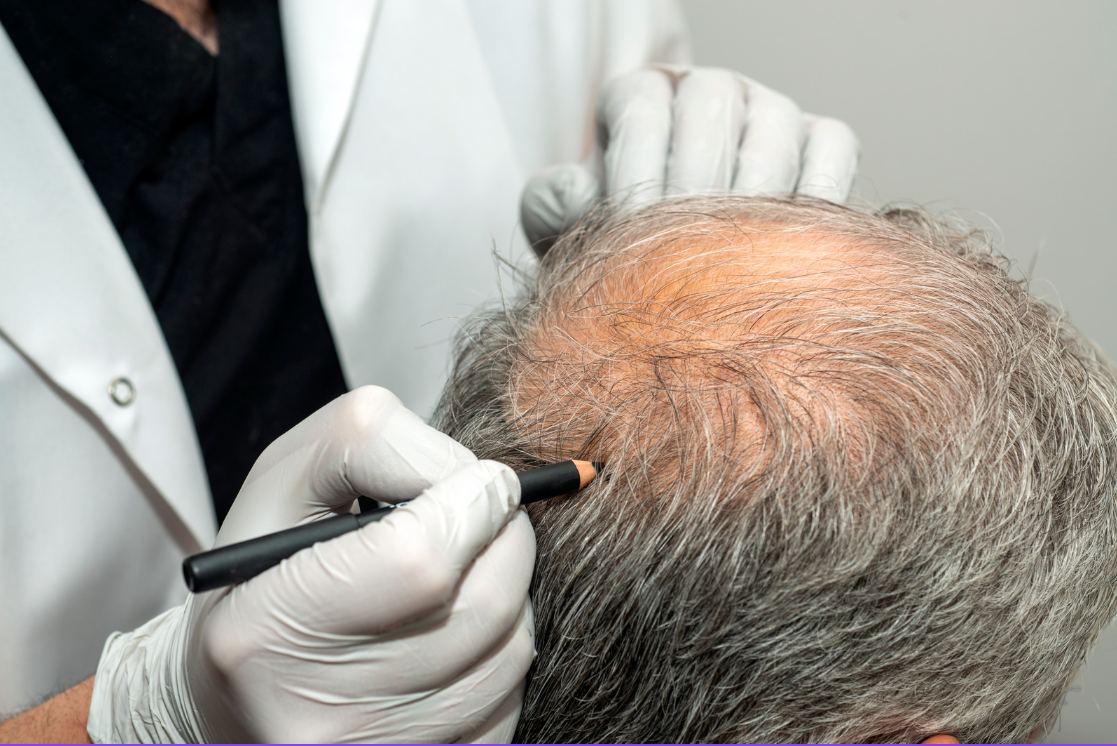Hair loss is one of the most common aesthetic issues affecting both men and women, negatively impacting self-confidence and overall appearance. With advancements in technology and medicine, hair transplantation has become one of the leading solutions for restoring hair and improving appearance. In this article, we’ll explore the latest hair transplant techniques, their benefits, and drawbacks.
What is Hair Transplantation?
Hair transplantation is a cosmetic medical procedure that involves transferring hair follicles from areas of the scalp with dense hair (such as the back or sides of the head) to areas experiencing baldness or hair loss. The effectiveness of this procedure depends on precise techniques aimed at achieving a natural hair distribution.
Top Hair Transplant Techniques
With advancements in medical aesthetics, several techniques have emerged to cater to patients’ varying needs. The most notable include:
1. Follicular Unit Extraction (FUE)
FUE is one of the most popular modern hair transplant methods. This technique involves extracting individual hair follicles from the donor area and implanting them into the target area.
- Advantages:
- Less invasive compared to older methods.
- Leaves no visible scars.
- Short recovery period.
- Disadvantages:
- Time-consuming.
- Can be more expensive than traditional methods.
2. Follicular Unit Transplantation (FUT)
This technique involves removing a small strip of skin containing hair follicles from the donor area, dividing it into smaller units, and implanting them into the target area.
- Advantages:
- Suitable for individuals requiring large amounts of transplanted hair.
- Relatively less expensive than FUE.
- Disadvantages:
- May leave a scar in the donor area.
- Requires a longer recovery period.
3. Robotic Hair Transplantation (ARTAS)
This advanced technique uses a robotic system to perform hair transplants with high precision. The system employs artificial intelligence to identify and extract the strongest follicles.
- Advantages:
- Extremely accurate.
- Reduces human errors.
- Disadvantages:
- Very expensive.
- Not widely available.
4. Direct Hair Implantation (DHI)
DHI is an advanced form of FUE that uses a special tool (Choi Implanter Pen) to implant follicles directly into the scalp without the need to pre-open channels.
- Advantages:
- Extremely natural appearance.
- Minimal bleeding and side effects.
- Disadvantages:
- Requires highly skilled practitioners.
- Costly and time-intensive.
Who is the Ideal Candidate for Hair Transplantation?
- Individuals with hereditary hair loss.
- Those with dense and healthy donor areas.
- People in overall good health.
- Individuals without conditions that affect hair growth, such as total alopecia.
Preparations Before a Hair Transplant
Before undergoing a hair transplant, several steps are essential to ensure the procedure’s success:
- Consulting a doctor to assess the condition and choose the appropriate technique.
- Avoiding smoking and alcohol prior to the procedure.
- Discontinuing certain medications (as advised by the doctor).
- Thoroughly washing the hair the day before the procedure.
Post-Transplant Care
To achieve the best results, follow these post-operative instructions:
- Avoid touching or scratching the scalp.
- Refrain from strenuous physical activity for two weeks.
- Use prescribed medications and products as directed by the doctor.
- Avoid direct exposure to sunlight.
Conclusion
Hair transplant techniques have become an effective solution for addressing hair loss, offering patients natural results and an improved appearance that enhances their confidence. However, to ensure the success of the procedure, it’s essential to choose the right doctor and specialized clinic. If you’re considering a hair transplant, don’t hesitate to consult a professional for the best advice.

 العربية
العربية
